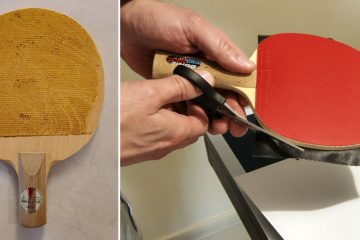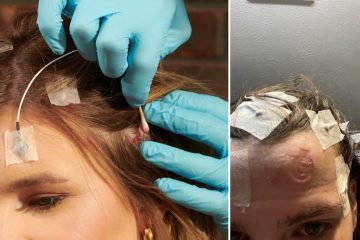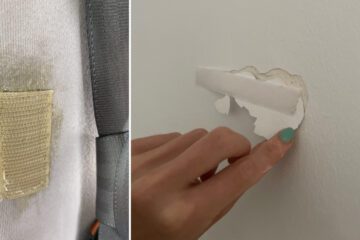PVC pipe is commonly used in plumbing and construction projects because it is durable, lightweight, and flexible. However, the PVC cement (glue) used to bond the pipes can be harmful if it comes in contact with skin. Getting PVC glue on your hands is an annoying and sometimes painful experience. However, with the right techniques you can break down that sticky, irritating residue and restore your skin. In this article, we will show you how to remove PVC glue from hands safely and easily.
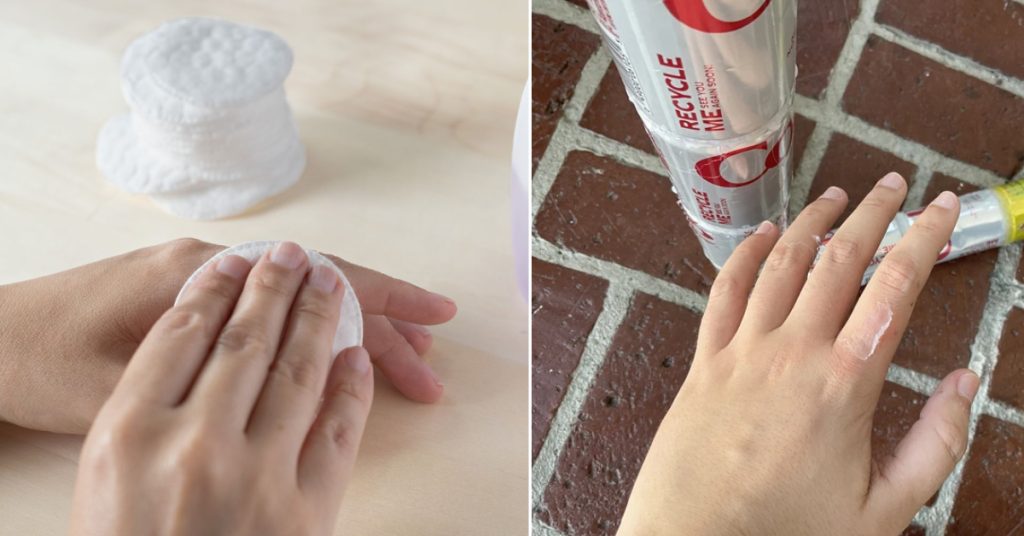
Key Takeaways:
- Use warm soapy water, solvent-based removers, and baking soda to dissolve PVC glue
- Moisturize hands after removal to prevent irritation
- Wear gloves and work in ventilated areas to avoid skin contact
Understanding PVC Glue
PVC cement is a welding solvent rather than just a sticky paste. It melts and fuses piping components made from PVC plastic together to form an enduring, leak-proof bond. The solvents allow the PVC molecules to mix, creating a strong connection. Common solvent ingredients include acetone, methyl ethyl ketone, cyclohexanone, and tetrahydrofuran.
No wonder this stuff adheres so stubbornly to the skin! Trying to claw dried PVC cement glue off your hands only leads to frustration and damage. A smarter approach is to use the right chemical agents and procedures to dissolve the glue.
You Can Check It Out What Happens if You Use PVC Glue on ABS.
5 Proven Steps for How to Remove PVC Glue From Hands
Here are the 5 proven steps for how to remove PVC glue from hands:
Step 1: Scrub With Warm Soapy Water
As soon as you notice wet cement glue on your hands, start removing it! First, wash your hands thoroughly with hot, soapy water. Antibacterial dish soaps work well. Use a nail brush or scrubs sponge to help dislodge the adhesive as you wash. Be sure to scrub every surface of your hands including fingernails. Give extra attention to deep crevices and cuticles where glue can collect. The heat and soap will start breaking down and loosening the glue’s grip.
Step 2: Apply A Solvent-Based Remover
For the next stage, it’s time to bring out stronger solvents. First aid options include nail polish remover containing acetone, Grip Clean heavy-duty hand cleaner, lighter fluid, or rubbing alcohol. Soak a cotton wipe, cloth, or cotton ball with your chosen solvent. Then, gently rub it over the sticky residues for 30 seconds up to a few minutes. The solvent will dissolve and lift the remaining glue so you can wipe it away more easily. Be patient and repeat applications if needed, allowing time for the solvents to penetrate and work. Avoid harsh rubbing and don’t use too much force.
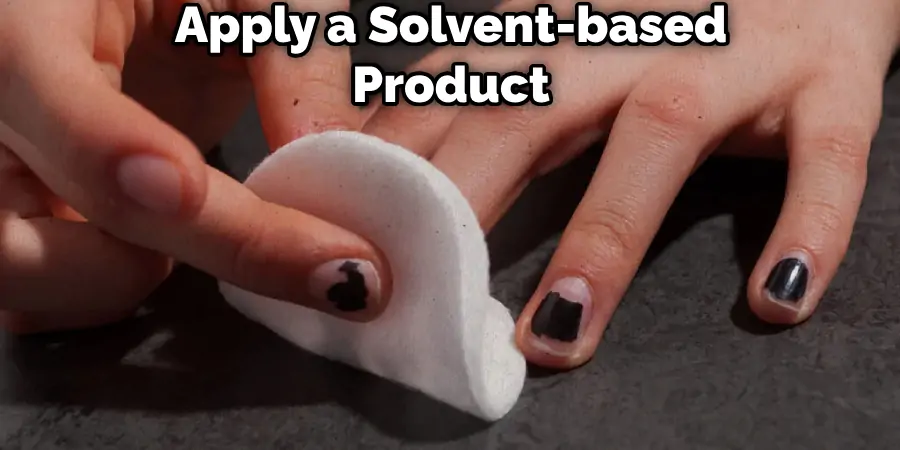
Step 3: Repeat With Baking Soda
Here’s a nifty trick that takes advantage of baking soda’s mild abrasiveness. Make a paste by stirring a teaspoon of baking soda with a teaspoon of warm water. Apply this paste to glue patches and use your fingers to gently scrub. The gritty texture helps lift softened glue peeled by the solvents. A soft bristle brush can also help agitate the paste. Rinse when done and repeat if necessary. The baking soda has a neutralizing effect too.
Step 4: Try Oil Massage
For really stubborn spots of PVC cement residue, try using cooking oils. Lightly coat the affected areas with vegetable oil, olive oil, or baby oil. Leave for 60 seconds before scrubbing with a paper towel or soft cloth. The oil loosens the adhesive grip for easier removal. Use dish soap afterward to rinse away oily residues. We recommend doing the oil massage as a last resort if other methods fail since it can leave skin greasy.
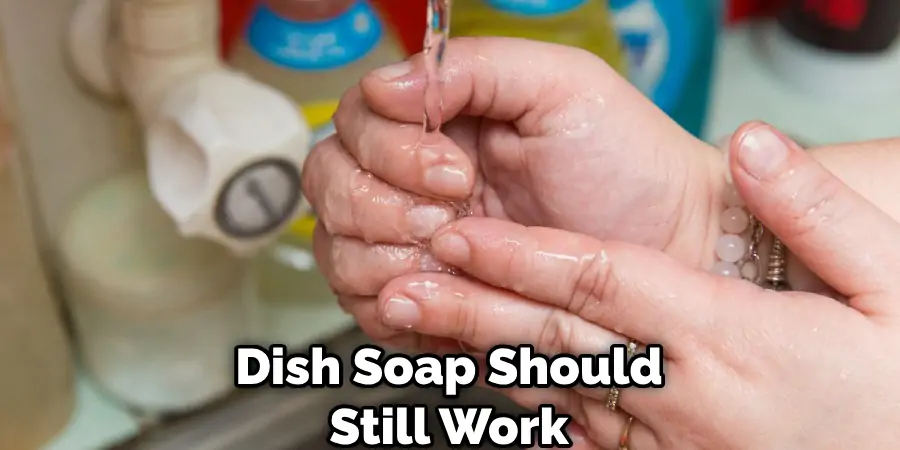
Step 5: Moisturize
Once your hands are PVC glue-free, it’s vital to replenish moisture and smooth any irritation, dryness, or cracking. Find an intensive, rich hand cream containing ingredients like aloe vera, vitamin E, shea butter, or jojoba oil. Smooth a dime-sized amount all over your hands.
If skin redness or itching persists more than a day after removing PVC cement, we suggest speaking to your doctor. Signs of an allergic reaction to solvents can include rashes, swollen fingers or hands, or stinging sensations. Seek medical help immediately in severe cases.
You Can Check It Out to Remove PVC Glue From PVC Pipe.
5 Tips for Avoiding PVC Glue Messes
Preventing PVC cement from contacting your bare hands remains the best approach. Follow these handy tips for neater gluing sessions when working with PVC parts and fittings:
- Wear latex or rubber disposable gloves when handling PVC cement tubes or dripping joints. Nitrile gloves also resist solvents well.
- Spread newspaper or scrap material to protect work surfaces.
- Keep some nail polish remover or Grip Clean handy for quick glue clean-ups.
- Never use brute force to open sealed PVC cement tubes. Follow the manufacturer’s instructions.
- Work in a well-ventilated area and take regular breaks from fumes.
You Can Check It Out to Glue PVC to Wood.
FAQs About How to Remove PVC Glue From Hands
Will Nail Polish Remover Remove PVC Glue?
Yes, nail polish remover containing acetone can be used to remove PVC glue. To do so, apply some nail polish remover to a soft cloth and gently dab the glue until it dissolves – be careful not to vigorously rub the area to avoid damaging the PVC surface. The acetone solvent will break down the bonds in the glue. Take care when using acetone and work in a well-ventilated area, as the fumes can be strong. Also, test on a small inconspicuous spot first to ensure the remover doesn’t damage the material. Use the remover sparingly and wash treated areas afterward.
Is PVC Glue Bad for Skin?
Yes, PVC glue can be harmful to skin contact. The glue contains solvents that can irritate skin, cause rashes or blistering, and be absorbed into the body over time. Contact is especially dangerous if the skin is damp from sweating, as this enhances absorption. Seek medical attention if significant contact occurs. To prevent issues, avoid skin contact by wearing gloves and washing immediately if glue gets on the skin. Also, work in a ventilated area. Overall, it is best to minimize exposure, as the solvents in PVC glue pose short-term and long-term skin hazards.
Is PVC Glue Permanent?
Yes, PVC glue creates a permanent bond when applied correctly between two PVC surfaces. The glue works by dissolving the surfaces and fusing them on a molecular level through a chemical reaction. This “cold welding” process bonds the pieces so strongly that they become one fused piece of material. The bond continues to cure and reach maximum strength over 24-72 hours after application. At that point, the joint is permanent – the only way to “undo” it is by cutting out and replacing the section of PVC pipe. So properly applied PVC glue does not just adhere to the materials, it permanently fuses them into one.
What Will Get PVC Glue Off Your Hands?
To remove PVC glue from the skin, first try scrubbing hands with warm, soapy water or soaking them to soften the glue. If that fails, apply acetone nail polish remover with a cotton ball, using gentle, quick strokes. Acetone dissolves the glue. Take care to avoid eye contact and rinse your hands well after. Rubbing alcohol can also work to dissolve the glue. Another option is applying a generous amount of petroleum jelly to the glue residues and letting it sit before wiping it away. Test any removal solutions on small areas first if you have sensitive skin and seek medical advice if irritation persists. With some time and patience using these methods, PVC glue can be removed from the skin.
You Can Check It Out the PVC Glue Calculator.
Conclusions
With the right preparation and removal steps, PVC gluing doesn’t need to be a sticky situation! We hope this guide gives you how to remove PVC glue from hands on your next PVC project. Just be careful when handling PVC products, and consider wearing gloves to prevent skin exposure when possible. Let us know in the comments if you have any other effective techniques for removing stubborn PVC cement.
